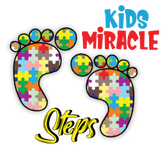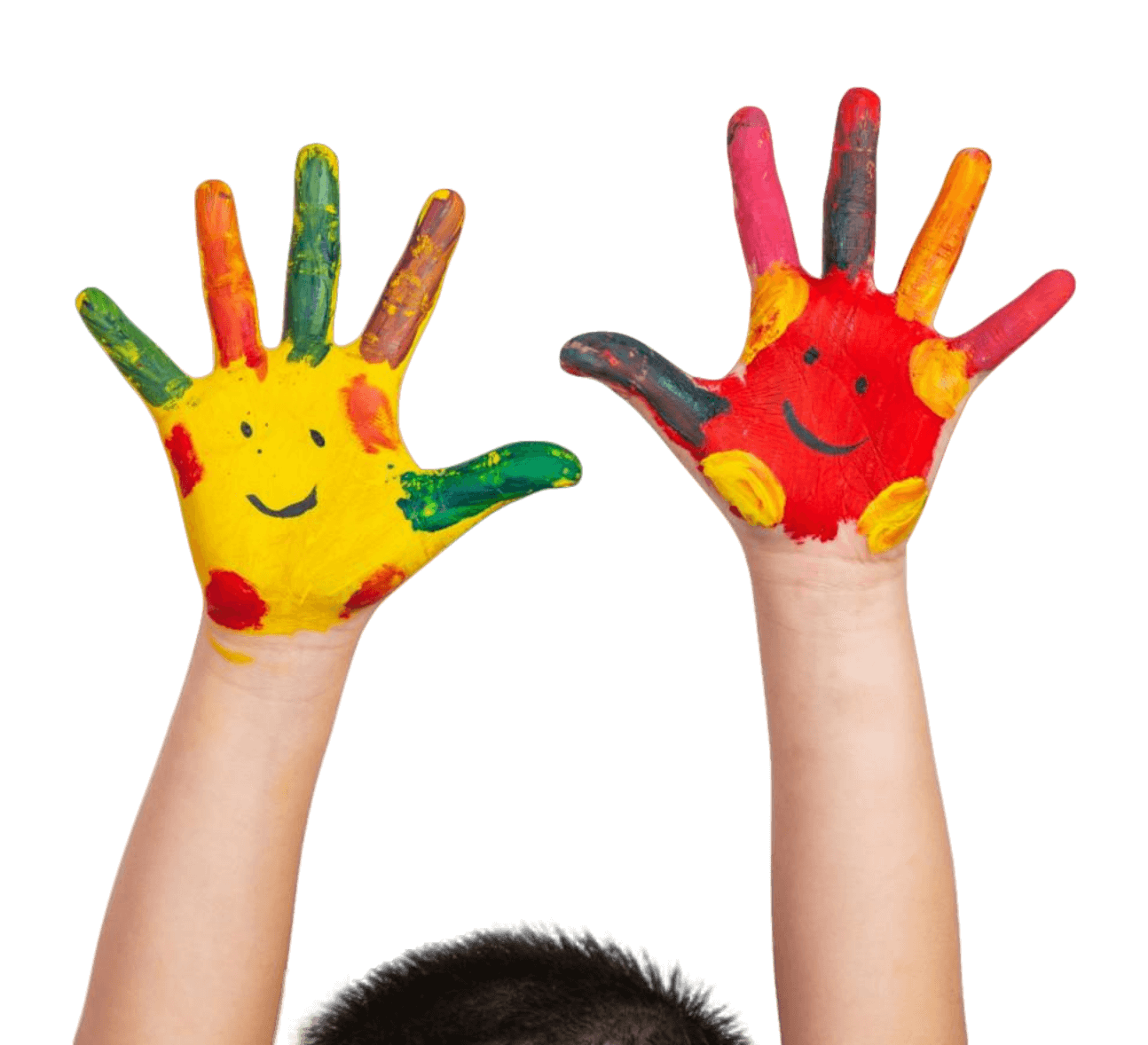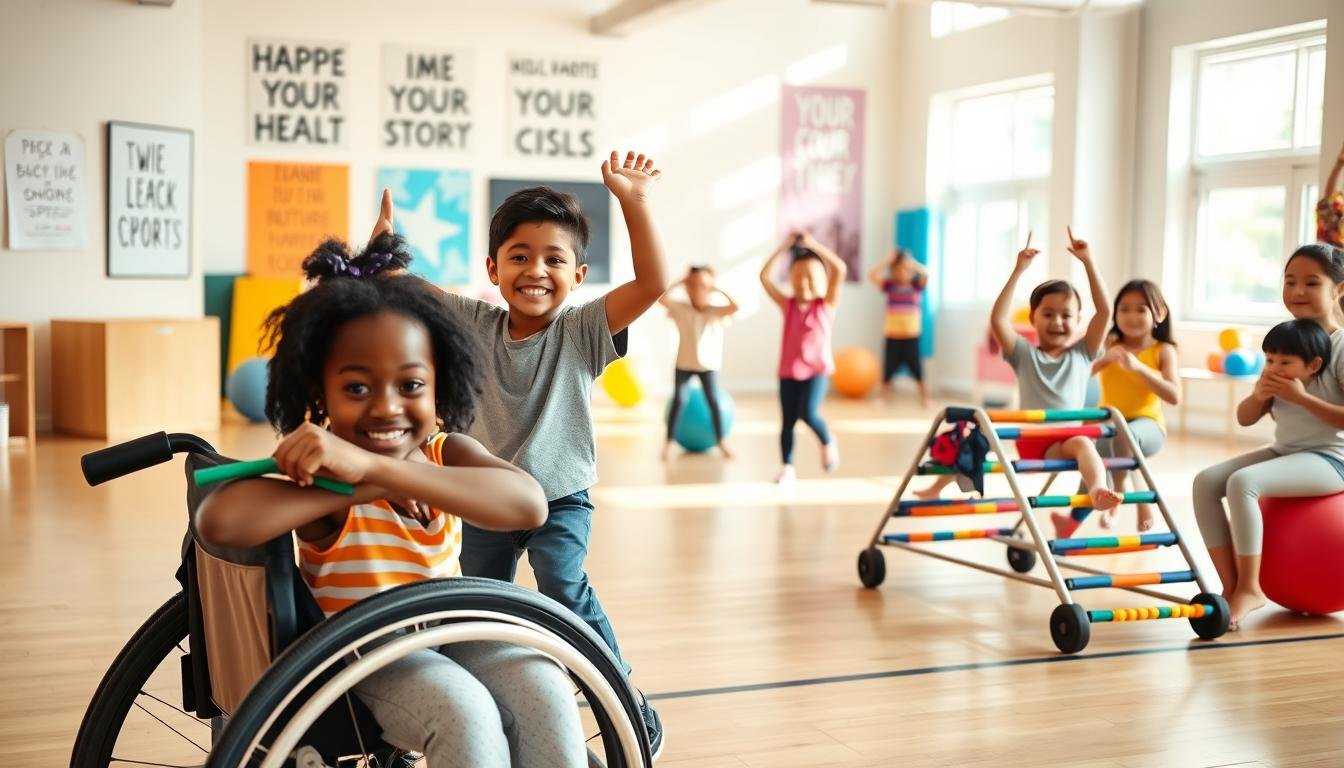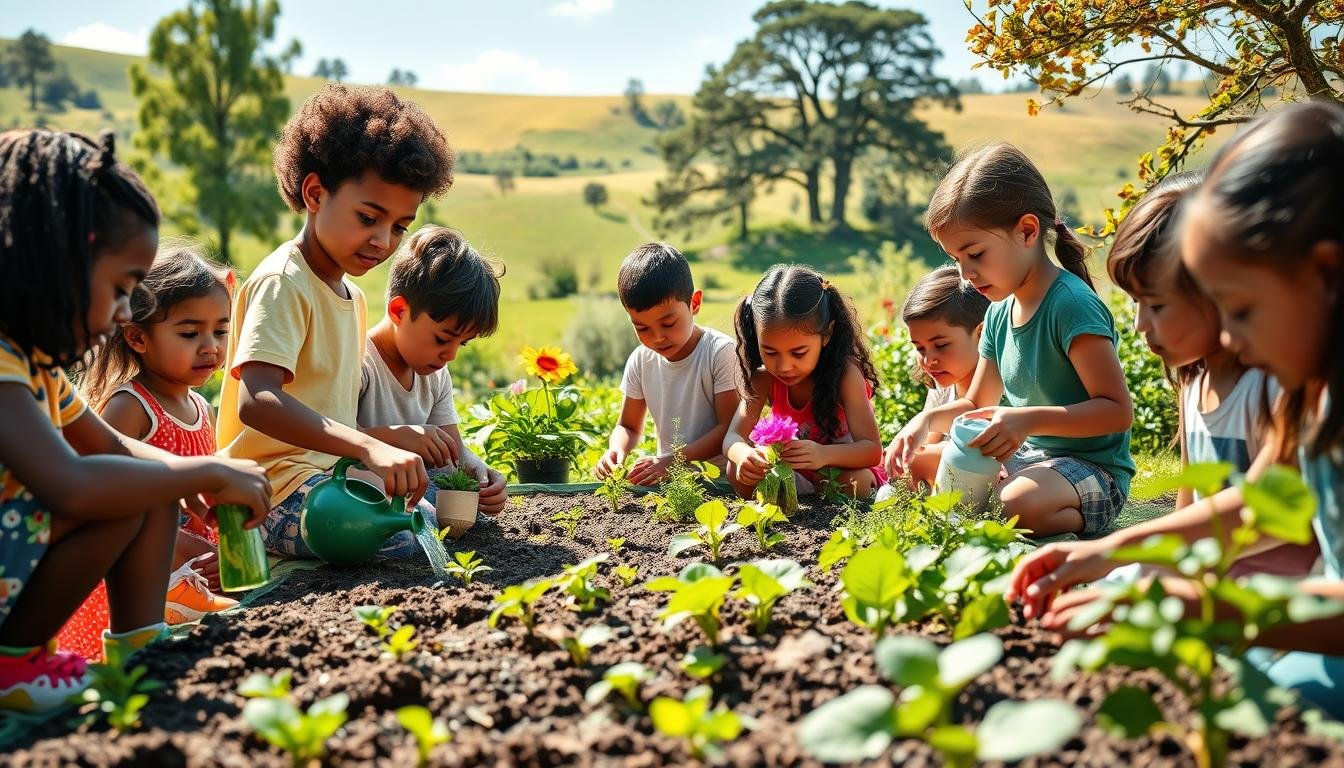Ever thought about making exercise fun for your child with special needs? It might be tough to find the right way. But with some creativity and understanding, we can turn it into their favorite part of the day.
When we encourage exercise for special needs, we focus on what they can do. Exercise is vital for their body, mind, and spirit. By creating fun exercise plans, our children can achieve more than we ever imagined.
The Importance of Exercise for Children with Special Needs
Exercise is very important for all kids, including those with special needs. It helps them strengthen their muscles and breathe better. It also helps them maintain a healthy weight.
But, exercise is more than just being fit. For children with special needs, it boosts mental health and helps them make friends. It creates a sense of belonging.
Kids with disabilities often exercise less than others. This lack of activity can affect their health and happiness. Yet, exercise can help them feel proud of their achievements. It also helps improve their self-esteem. Being part of a team can make them feel included.
| Benefits | Impact on Special Needs Children |
|---|---|
| Muscle Strength | Improved mobility and independence |
| Lung Capacity | Better respiratory health |
| Healthy Body Weight | Reduced risk of obesity-related issues |
| Mental Health | Decrease in anxiety and depression |
| Social Inclusion | Enhanced social skills and friendships |
Understanding the Challenges
Kids with special needs often face many exercise barriers special needs when it comes to staying active. These barriers can be physical, like issues moving or not liking certain sensations. Other kids might have trouble with standard sports and exercises.
Things like adaptive equipment can be pricey, and not all places are easy for everyone to get into and use. Kids might also feel left out or bad about themselves. These feelings can make them not want to join in. The first step is knowing the adaptive sports challenges they face.
Once we see these barriers, we can come up with ways to help. We can change our plans to fit what each kid needs. This way, we make sure everyone can join in, making a friendlier place for all.
Tailoring Activities to Your Child’s Interests
It’s key to choose physical activities that spark interest in children with disabilities. When we customize sports to match a child’s interests, they find joy in exercise. This makes working out fun instead of a task.
Think about what your child likes and what they can do. For some, swimming feels good and is lots of fun. Others might prefer horseback riding since it helps them physically and emotionally.
Creating exercise plans that include what your child loves leads to them being more eager to participate. Sports that adapt to their needs, like wheelchair basketball or modified track, create a space where all kids feel valued and able. By tailoring sports, every child can feel included and strong.
| Activity | Benefits | Customizations |
|---|---|---|
| Swimming | Improves overall fitness, coordination, and relaxation | Accessible pools, flotation devices |
| Horseback Riding | Enhances balance, strength, and confidence | Therapeutic riding programs, trained instructors |
| Adaptive Basketball | Boosts teamwork, strategy skills, and physical health | Wheelchair accessibility, modified rules |
| Track and Field | Encourages endurance, speed, and self-discipline | Customized equipment, personalized pacing |
Choosing the right activities for kids with disabilities is a team effort. It involves parents, caregivers, and experts. Through tailored exercise plans, physical activity becomes a cherished part of our children’s daily routine.
Family Involvement and Encouragement
As parents, it’s our job to help our kids with disabilities enjoy being active. We do this best by joining in their activities. This shows we are in it together and boosts their drive.
When we all get involved in fun activities, it builds our children’s self-belief. They want to try more things. Celebrating each step they make is key. We should use encouraging words and real compliments. It makes them feel good.

Helping them get to the right programs and resources is also crucial. This might mean getting them into special sports groups or community activities that welcome everyone. This shows we’re all in together. Doing things as a family that everyone enjoys can change how kids with disabilities view being active.
Keep things fun by choosing activities your child likes, such as swimming or dancing. These things not only keep them fit but also help them feel stronger and more confident.
Support isn’t just about planned activities. It’s found in the everyday things too. Taking walks together or playing catch can mean a lot. These simple actions show that being active is not only possible but also fun.
Utilizing Community Resources
Thinking about keeping our kids with special needs active is important. We can use local community resources for help. This way, our kids can enjoy physical activities that are good for them. Many places offer accessible sports facilities for different disabilities. This lets every child join in and get better in both health and happiness.
In these programs, we often see special classes made just for kids with disabilities. They are sometimes free or cost less. This shows a lot of support for activities that welcome everyone. Places like community centers help parents find the right physical activities for their kids. They help find sports that are perfect for children with special needs.
There are also activities like walking, cycling, and swimming that can be adapted. Special gear can make these activities fit for any child. Using these resources, your kid can stay active and feel part of their community.
Promoting a Routine and Consistency
Setting up a regular exercise plan can change the lives of kids with special needs. Making activities set in a schedule helps lower stress. It also boosts their confidence and makes them feel safe.
Having a stable program and steady physical education is key for a steady setting. Kids do well with routine. Including exercise in their daily routine helps them form good habits. And it gives them a feeling of achievement.
Incorporating Technology
Nowadays, using technology in fitness for those with special needs is changing the game. Things like adaptive gear and digital resources are reshaping how kids with special needs tackle physical activity. These cool tools offer custom experiences that improve their exercise paths a lot.
Adaptive gear, think special treadmills and resistance bands, make workouts safe and doable without losing their punch. With fitness apps that adjust to their needs and give feedback in the moment, exercise becomes fun and reachable for kids with disabilities.
We should really get behind these digital ways to help with exercise. They do more than just help physically. They build our kids’ confidence and let them be more independent. Adding this tech into their everyday life means a fitness world that welcomes everyone.
Adapting Sports for Accessibility
To let kids with special needs join in sports, we need to think carefully about changes. Making sports welcoming for everyone is crucial. We can use special gear, like easy-to-use wheelchairs or balls, to help everyone take part and have fun.
It’s not just about the gear though; we also change the rules to fit everyone’s needs. Maybe we tweak how points are scored or how long games last. This makes sports more fun for kids with all kinds of abilities. By adjusting how we teach sports, each kid gets what they need to join in and do well.
Adapting sports does more than just let kids play; it boosts their confidence and makes them feel proud. Through these changes, we make sure every kid can enjoy the fun and good things that come from playing sports.
The Role of Schools and Educators
Schools and educators are key in encouraging kids with special needs to get moving. They must add physical education classes fit for these kids into their teaching plans. This helps each child grow physically in their own way.
When schools offer sports and activities for all, every student gets to join in the fun. These activities make kids feel good and help them fit in at school. We stand by learning spaces that welcome everyone. This way, every kid gets a chance to shine.
Building a Support Network
Creating a strong support network helps children with special needs do their best. Being part of social support networks gives families the right tools and chances they need. Programs related to community involvement and advocating for special needs are key to keep all children active and healthy.
When you connect with other parents and caregivers, you can share tips and stories that improve your child’s exercise plan. Groups like Move United and the U.S. Paralympics offer great resources and programs for kids with disabilities, helping them get into sports.
Getting advice from doctors, physical therapists, and recreational therapists is also very important. They give personalized tips to make sure activities are fun and doable for each child. An advocate can guide you through the resources for you and your kid. Support from your community, specialists, and groups like the Muscular Dystrophy Association (MDA) is key for physical activity and health.
Here’s an overview of main resources and what they offer:
| Organization | Support Provided |
|---|---|
| Move United | Sports programs and adaptive activities |
| U.S. Paralympics | Competitive sports opportunities for children with disabilities |
| Muscular Dystrophy Association (MDA) | Advocacy, support networks, and specialized camps |
Encouraging Independence and Self-Motivation
Helping disabled children become independent starts with giving them the right tools and chances to make it on their own. Encouraging them to do physical activities by themselves can really help boost their confidence. Start with goals they can achieve, based on what they like, allowing them to grow and succeed at their own speed.
Celebrating every milestone, big or small, is a key way to build their self-motivation. Every achievement is important, and celebrating these can inspire children with special needs to achieve more. You could use a visual chart or planner to keep track of their goals and progress, as a constant source of encouragement.
Giving kids choices is also crucial. Letting them pick their activities gives them control and makes them more likely to stick with it. Plus, making these activities fun and like a game can make them more appealing, encouraging them to keep it up.
Support from family is also important in empowering children with special needs. When their support system believes in their independence, it boosts their confidence and motivation. With everyone’s support, we can help foster a sense of freedom and self-determination in disabled children that lasts a lifetime.
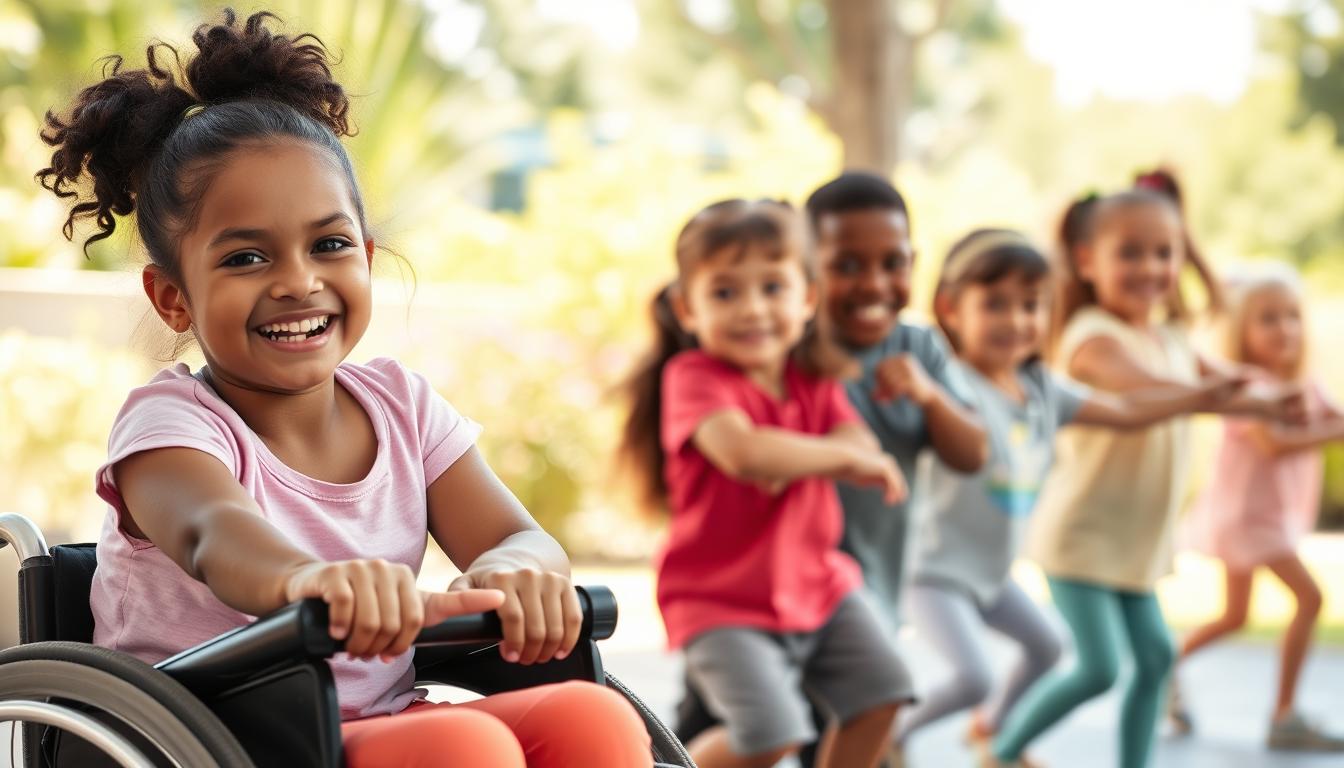
Conclusion
The benefits of exercise for children with special needs are many and significant. It not only improves their physical health but also boosts their mental health. Making exercise part of their lives can change them for the better, increasing both happiness and self-respect.
Encouraging kids to get active in ways they enjoy ensures they’ll want to keep moving. We’ve looked at several ways to do this. These include getting the family involved, using local resources, embracing technology, and making sports easy for everyone.
These strategies help make exercising inclusive and supportive. Our goal is to give you the ideas you need to help your child love being active.
Helping your child exercise regularly and become more independent can be challenging, but it’s worth it. It’s a long journey, but not one you have to rush. Alongside you, we’re ready to celebrate every progress they make.
We encourage you to look at Kids Miracle Steps. We offer personalized and understanding support for your child’s unique needs. Together, we can work towards a healthier, brighter future for them.
